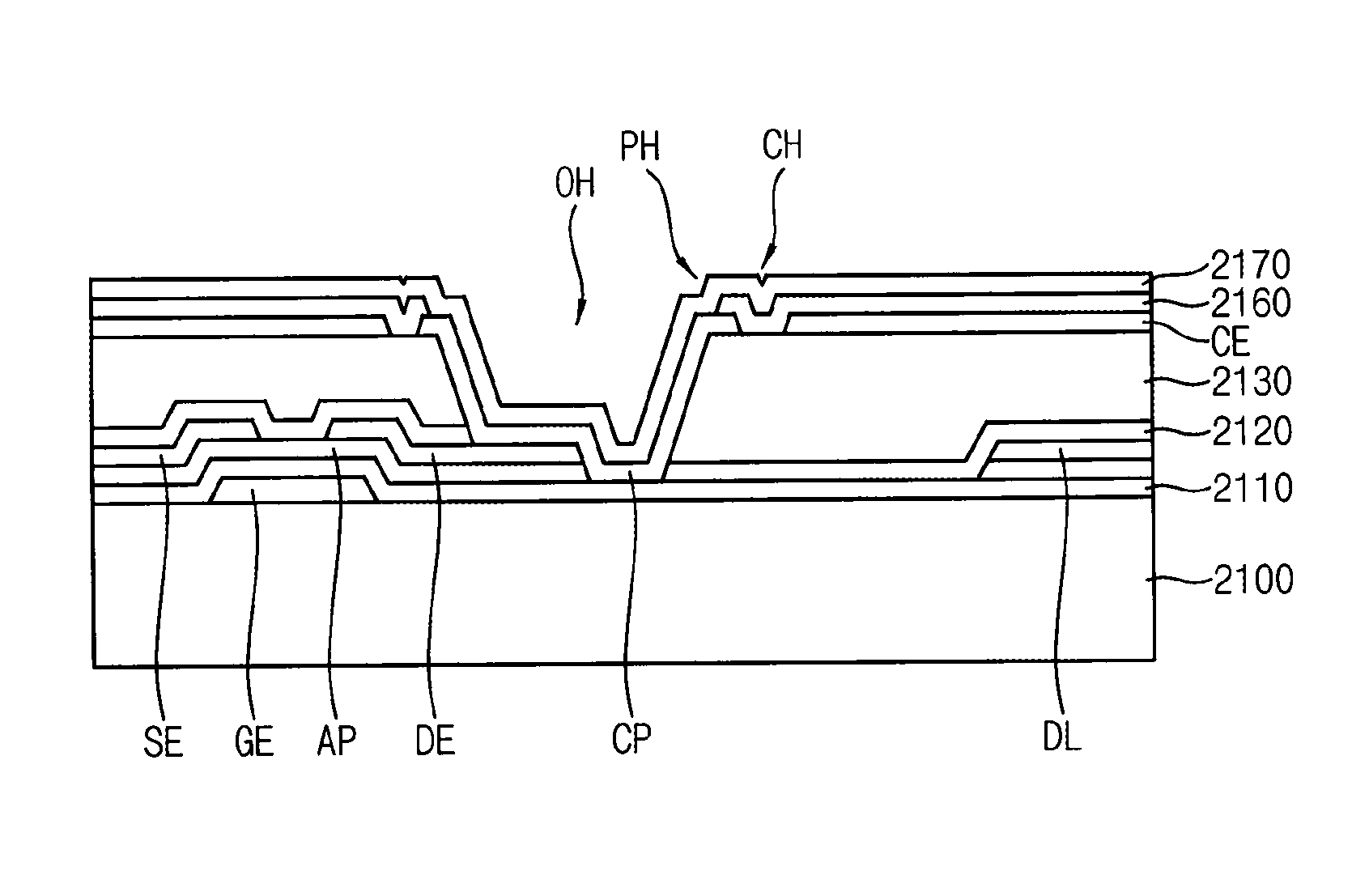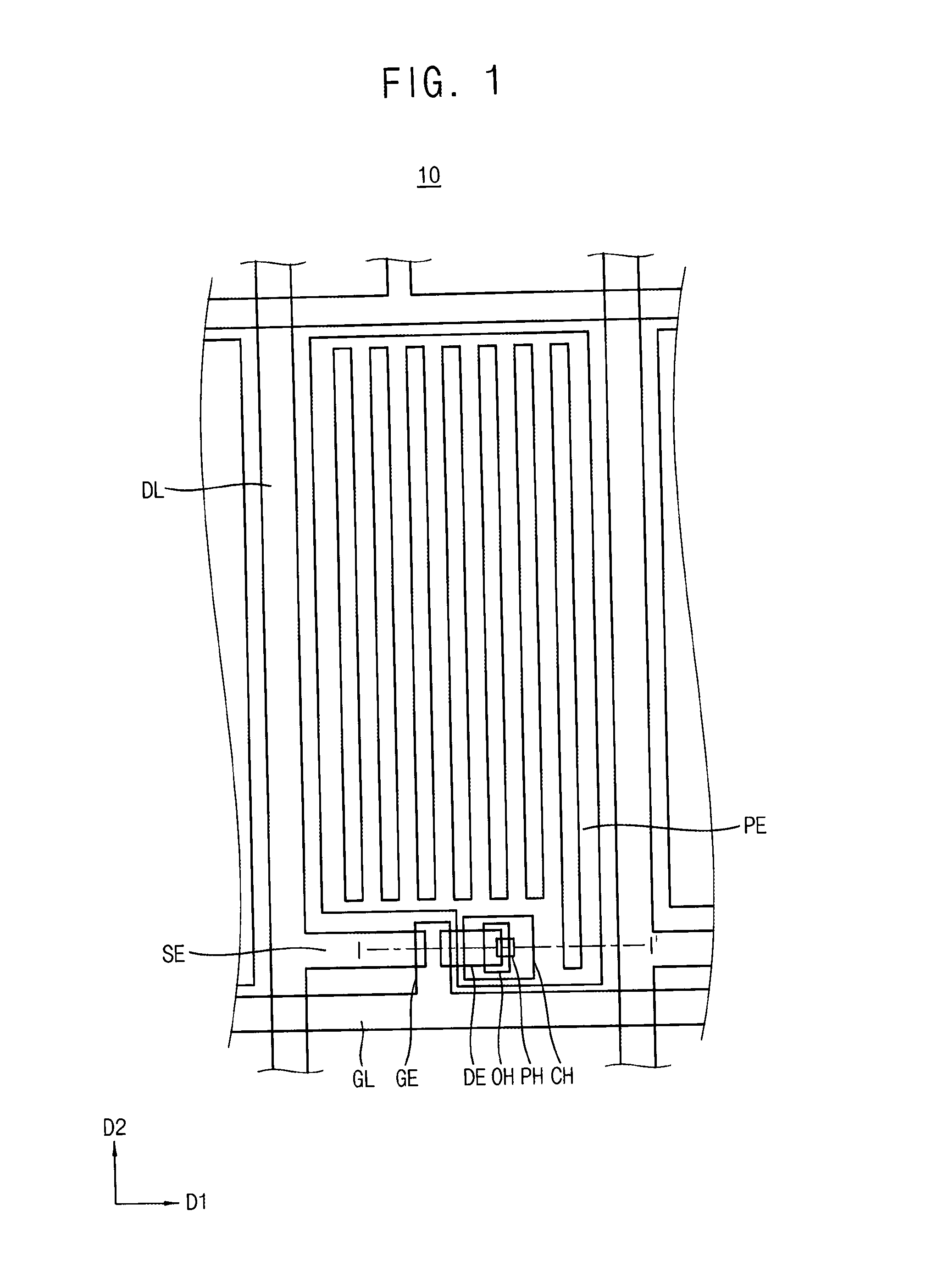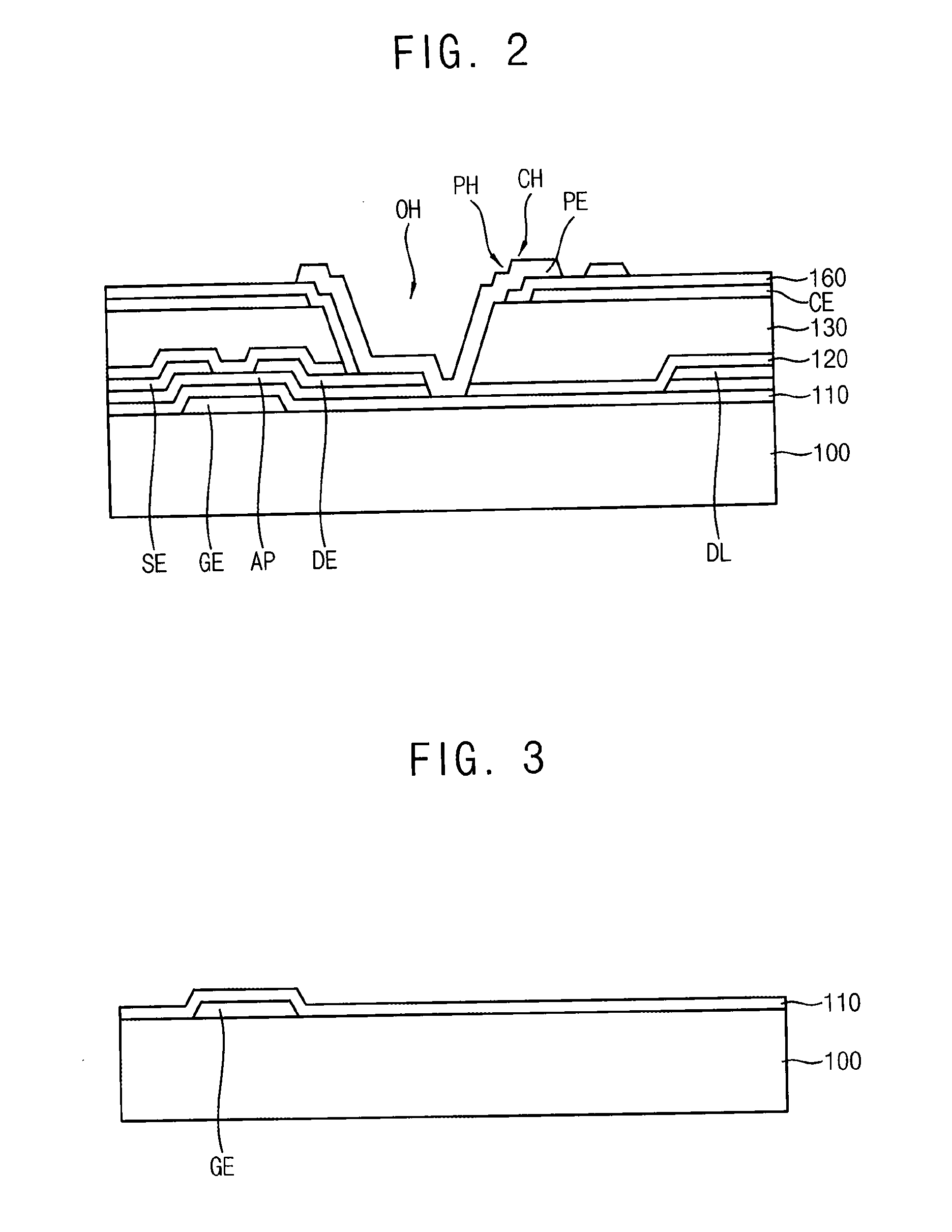Thin film transistor substrate and method of manufacturing the same
- Summary
- Abstract
- Description
- Claims
- Application Information
AI Technical Summary
Benefits of technology
Problems solved by technology
Method used
Image
Examples
Embodiment Construction
[0043]Hereinafter, the present disclosure will be explained in detail with reference to the accompanying drawings.
[0044]FIG. 1 is a plan view illustrating a thin film transistor substrate according to an exemplary embodiment of the present disclosure. FIG. 2 is a cross-sectional view taken along the line I-I′ of FIG. 1. Referring to FIGS. 1 and 2, a thin film transistor substrate 10 according to an exemplary embodiment includes a base substrate 100, a gate metal pattern including a gate line GL and gate electrode GE, a data metal pattern including a data line DL, a gate insulation 110, an active pattern AP, a first passivation layer 120, an organic layer 130, a common electrode CE, a second passivation layer 160, and pixel electrode PE. The gate line GL extends in a first direction D1. In one embodiment, the gate line GL has a single layer structure including copper (Cu), silver (Ag), chrome (Cr), molybdenum (Mo), aluminum (Al), titanium (Ti), manganese (Mn), and a mixture thereof. ...
PUM
 Login to View More
Login to View More Abstract
Description
Claims
Application Information
 Login to View More
Login to View More - R&D
- Intellectual Property
- Life Sciences
- Materials
- Tech Scout
- Unparalleled Data Quality
- Higher Quality Content
- 60% Fewer Hallucinations
Browse by: Latest US Patents, China's latest patents, Technical Efficacy Thesaurus, Application Domain, Technology Topic, Popular Technical Reports.
© 2025 PatSnap. All rights reserved.Legal|Privacy policy|Modern Slavery Act Transparency Statement|Sitemap|About US| Contact US: help@patsnap.com



